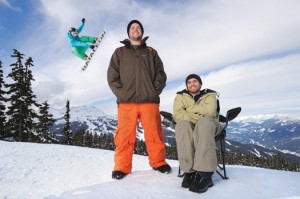 As we know, in most cases inventions result from necessities, problems, challenges or the need for simplicity but they also derive from accidents. Two young engineering students from Canada, Stephen Slen and Aaron Coret, have invented a landing pad for snowboarders and skiers after one of them, Aaron, had a severe accident while snowboarding in Whistler, Canada.
As we know, in most cases inventions result from necessities, problems, challenges or the need for simplicity but they also derive from accidents. Two young engineering students from Canada, Stephen Slen and Aaron Coret, have invented a landing pad for snowboarders and skiers after one of them, Aaron, had a severe accident while snowboarding in Whistler, Canada.
In recent years, snowboarding and skiing have also been accepted as disciplines at Olympic games. Therefore, the young engineers have teamed up to invent a landing pad to save skiers and snowboarders from hitting the ground to hard when landing.
Working from the back of a sail-manufacturing shop, they created a 15-by-20-by-5-foot vinyl-and-nylon landing pad that contained two inflatable chambers. The upper chamber was sealed, while the four-foot-high lower chamber had valves that released a controlled amount of air on impact. Unlike most landing pads, which give so much that they envelop the athlete, the prototype remained firm enough to land on and ride off of, but it had enough give to reduce the risk of injury.

To test the invention, Stephen and Aaron went up a glacier in Canada, but they were still unsure if it was going to work. With Aaron paralyzed from the neck, Stephen had to take the first jump to test the prototype. He took the risk, jumped down…….. and landed perfectly to then ride on. The invention worked and was ready to be patented.
The two of them founded a company, Katal Innovations Inc., and with the help of an expert who in large custom made bouncy castles, they were able to develop the pad further. When Canadian officials asked them to use their pad during the opening ceremony for the Vancouver Olympics, it was a dream come true for the young engineers. Since then it had been installed in different skiing resorts in the U.S. and Canada and is on a straight road to success.








